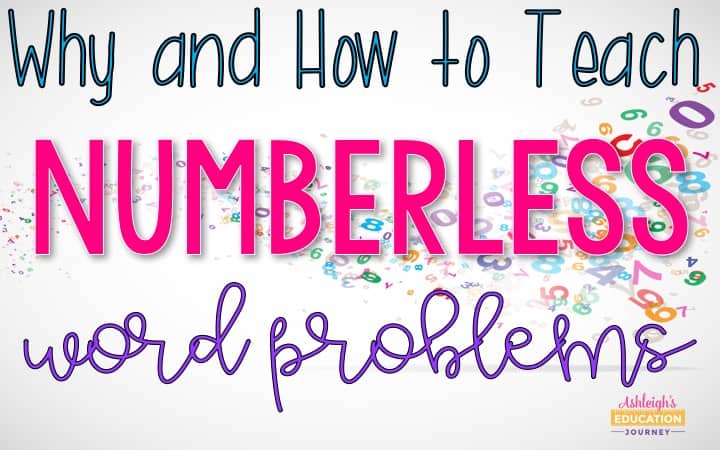
Anyone who has spent time teaching math has experienced assigning students a word problem and watching them “solve” the problem without even thinking about which operation(s) to use, why they should use that operation, or the meaning of the problem. When I first noticed this, I began teaching key words, and they worked. Usually. However, I soon realized that by memorizing key words, my students were not understanding what they were doing. They just solved problems and were not able to transfer their understanding to various situations. The key words were simply rules to be followed, and I wanted more for my students. When I first heard of numberless word problems, I was a bit skeptical, because it’s math and math requires numbers, or at least I thought it did.
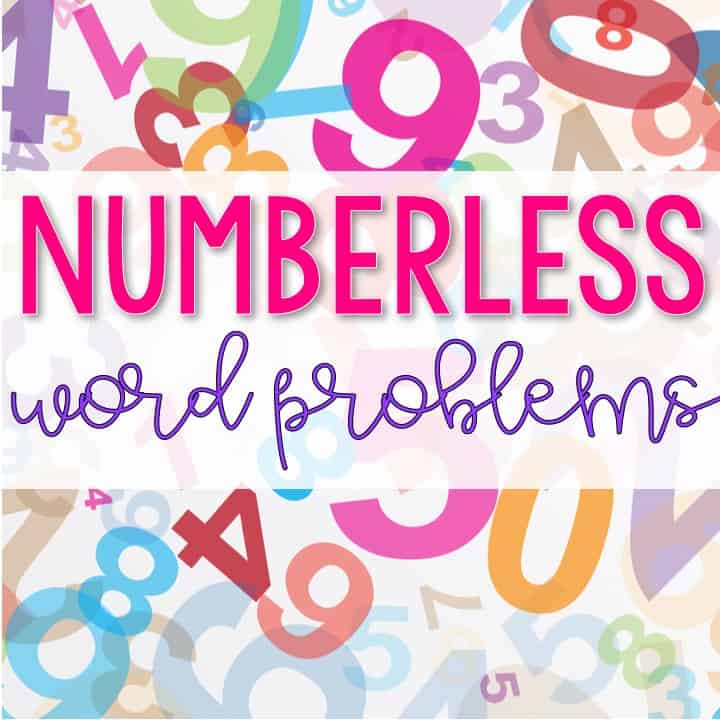
In numberless word problems, all numbers are removed temporarily while students process what the situation is and determine what information is needed to solve the problem. Then, numbers are gradually revealed until a solution is reached. Numberless word problems are especially beneficial for struggling students. They are nonthreatening and students don’t initially have to perform any computation, which allows them to build mathematical confidence. Numberless word problems are a great way to help students notice the relationships in problem situations before being presented with a number.
When using numberless word problems, I create multiple parts, one for each phase of revealing information. Then, I share the question after presenting all the information. The power of a numberless word problem is in the conversation students have as you reveal each new piece of information. As such, this activity works best in a whole group or small group setting. To initiate meaningful thinking, ask questions as you present each part of the problem.
For example: What information do you have? What does the new information tell you? Thinking of this situation, what operation(s) come to mind? What kinds of questions can you ask about this situation?
I am very intentional in how I select the type of word problems to focus on. I typically teach one type of word problem each week. After I’ve taught a particular type of word problem, I regularly review that to ensure students for better retention. I don’t expect my students to cite what type of word problem they are solving. This is more for me to make sure I have presented each type of word problem to my students.
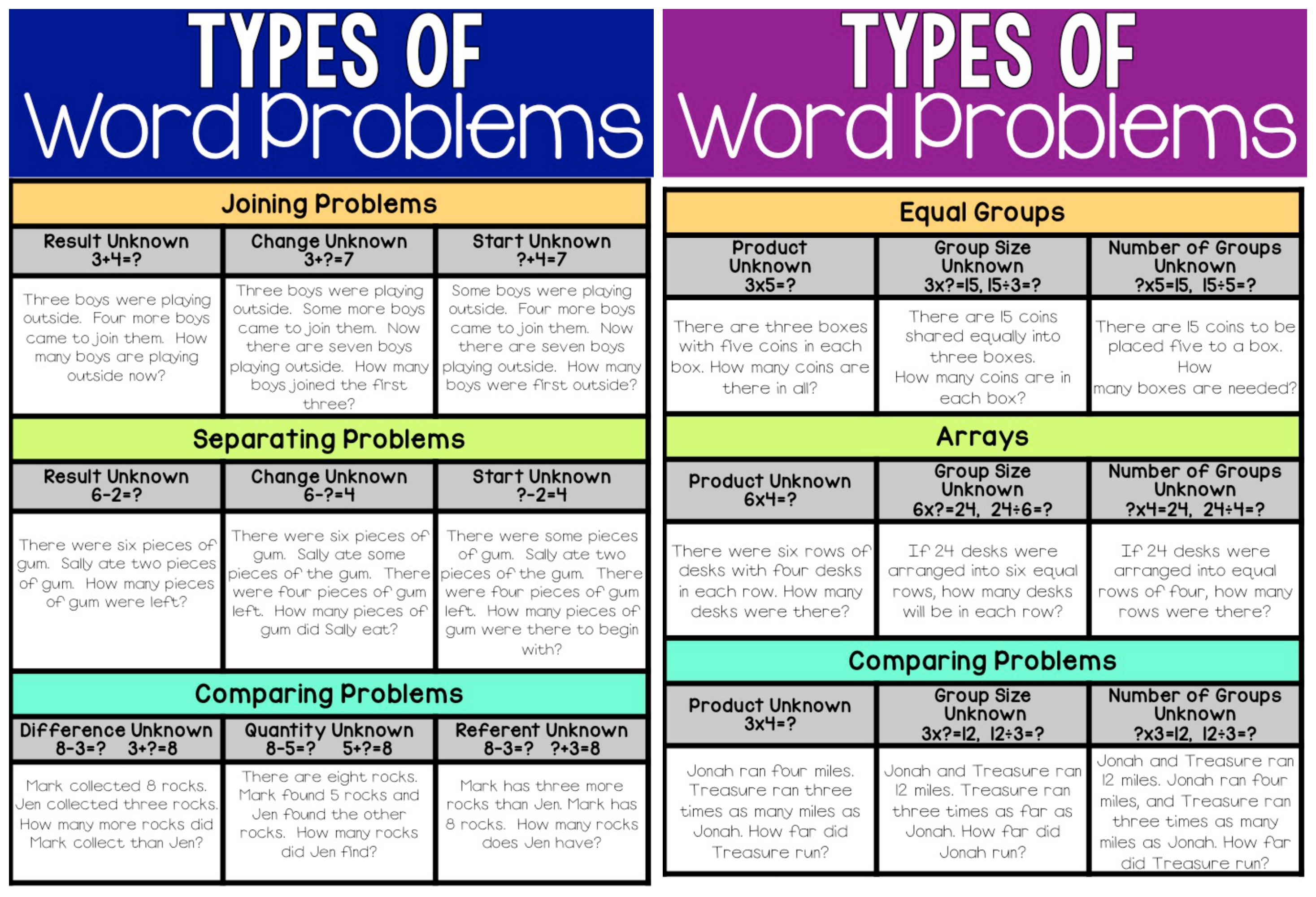
While I loved the concept of numberless word problem, I knew that it would be unrealistic to add one more thing to my full day of teaching, so I created a resource that would allow me to integrate this seamlessly in my instruction. The bulk of the resource consists of 100 slides with five word problems from each type of word problem shared above. When viewed in slide show mode, students will first see a mathematical situation where there are no numbers.
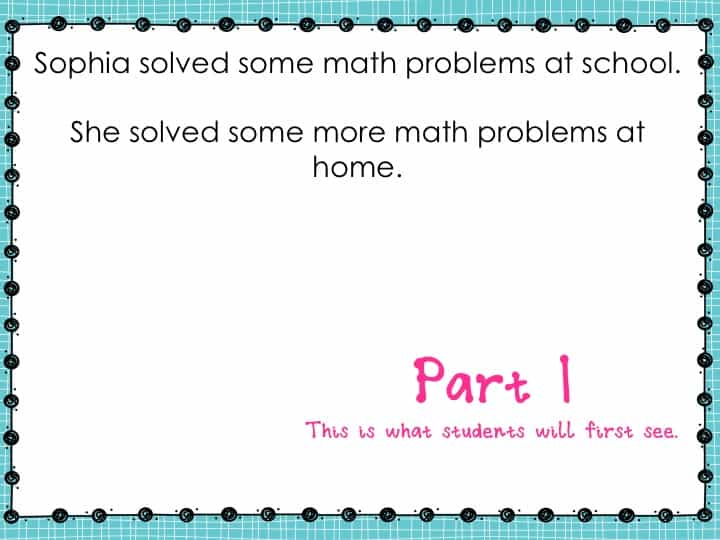
After discussing the context of the situation, I press the arrow key and new information is revealed, including some of the numbers needed in the problem.
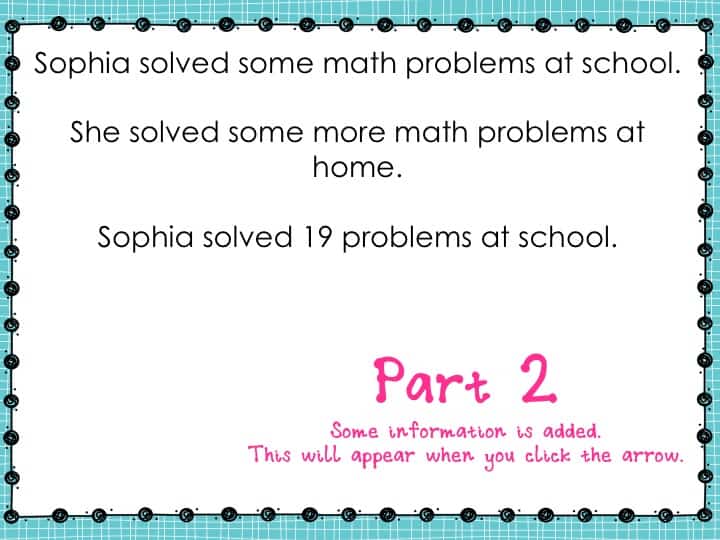
Once again, we discuss the new information, and then I reveal the remaining information needed to solve the problem. However, be sure to notice that at this point there is no question or problem for students to solve. In fact, I like to ask students what questions they could generate using the content in the problem.
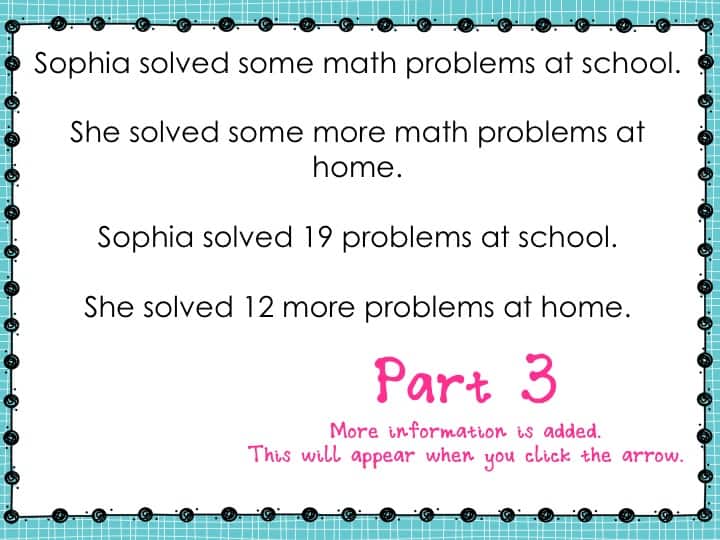
After showing students the question, we reflect on our predictions and solve the problem. We also discuss WHY this is an example of a joining problem.
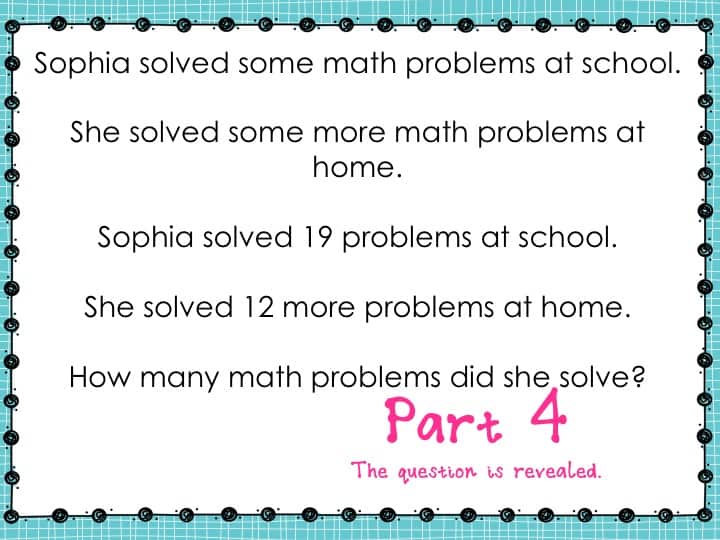
Since I know that every classroom is different, I want to provide teachers with as many options for this resource as possible, so I also made a paper version. I didn’t want the paper version to lose the positive impact of gradually releasing the information needed to solve the problem to students, so I made a few tweaks that have worked well for me. I cut a file folder into fourths. On the inside-left flaps, I glued in question stems for each portion of the word problem. Then, when I created a paper version of the word problems, I formatted the word problems so that each section could be revealed with the lift of the flap.
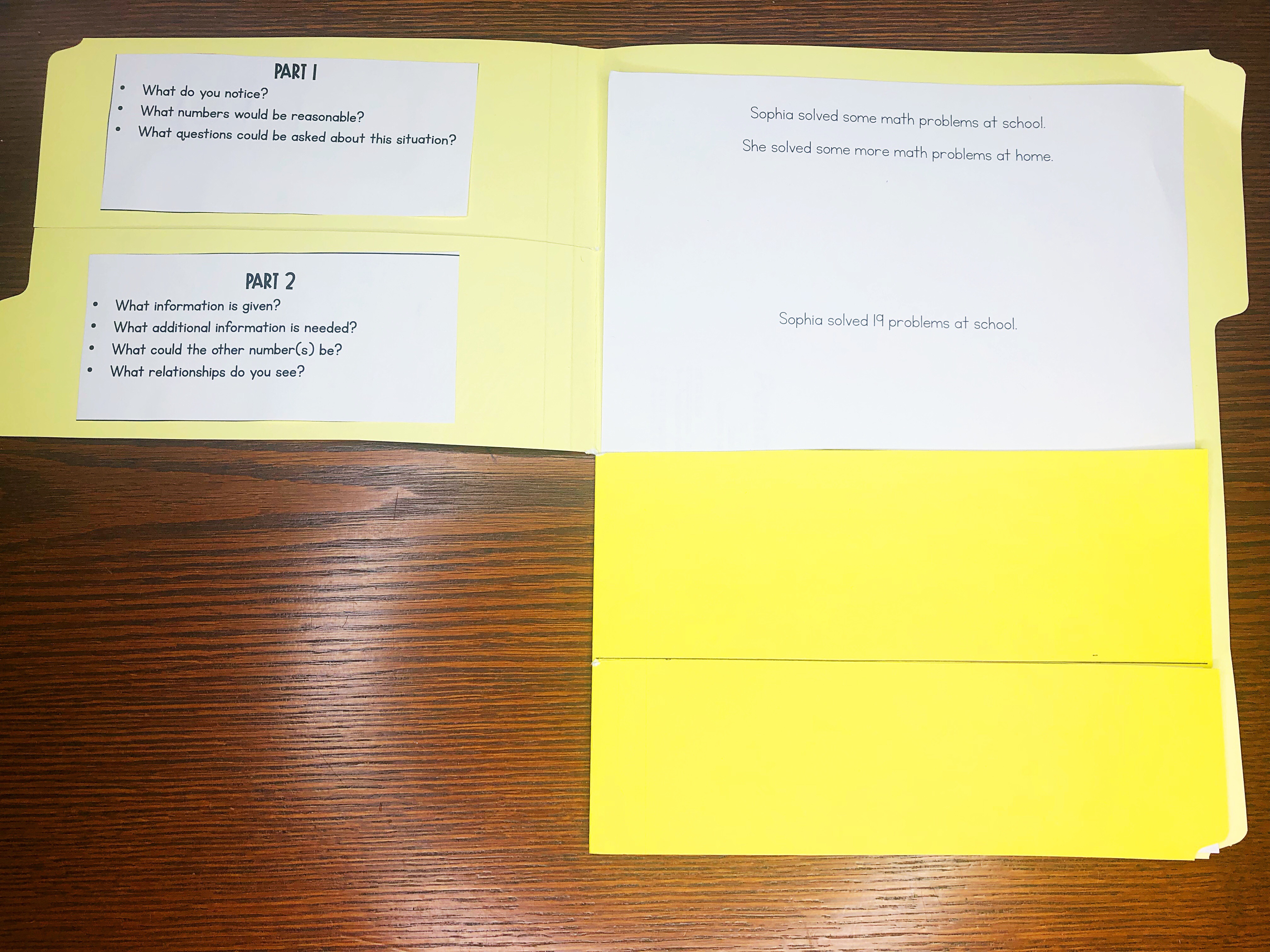
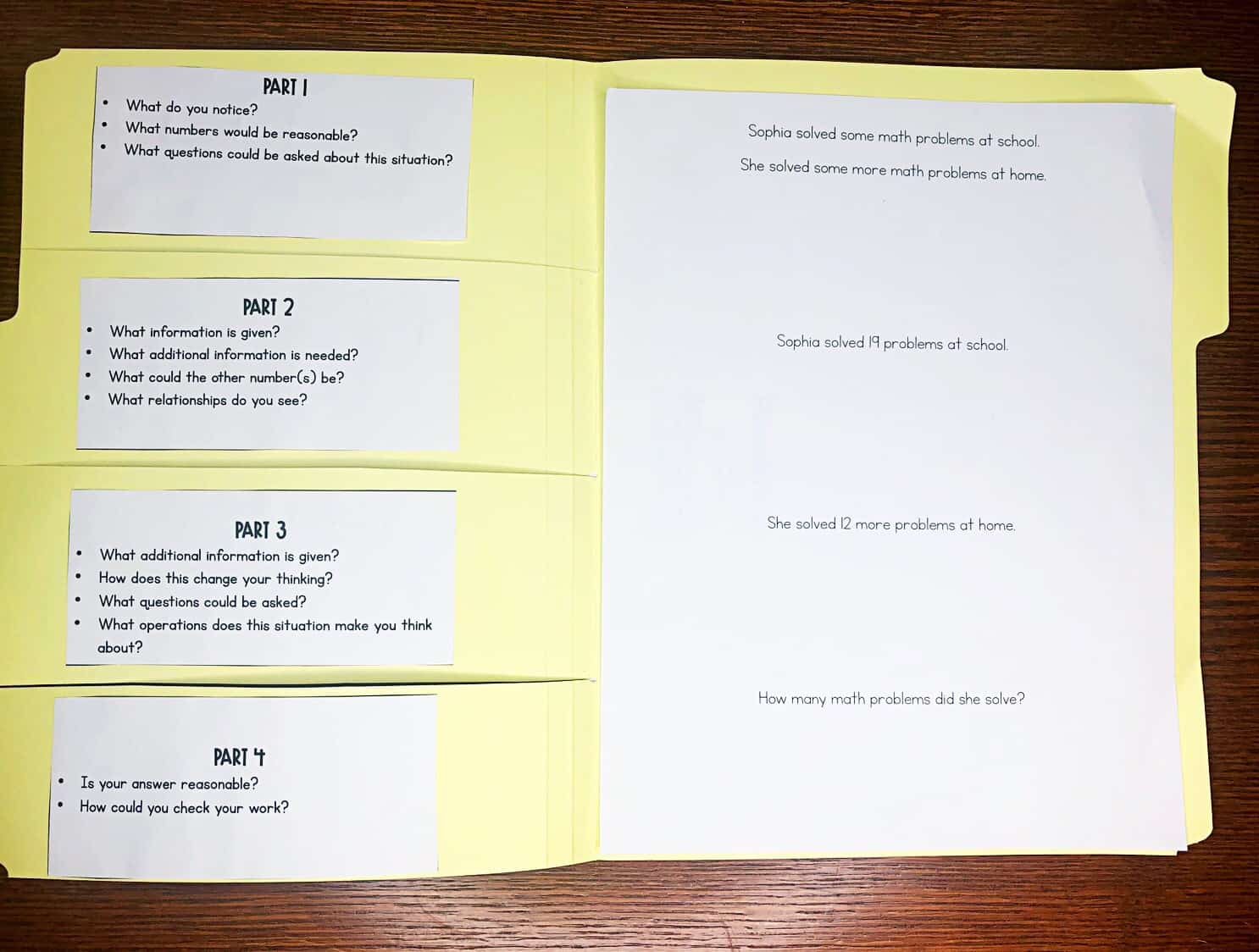
In the resource, I also included types of word problem posters that students can reference throughout the year. You can print them as full pages for a classroom display or shrink them for students’ notebooks.
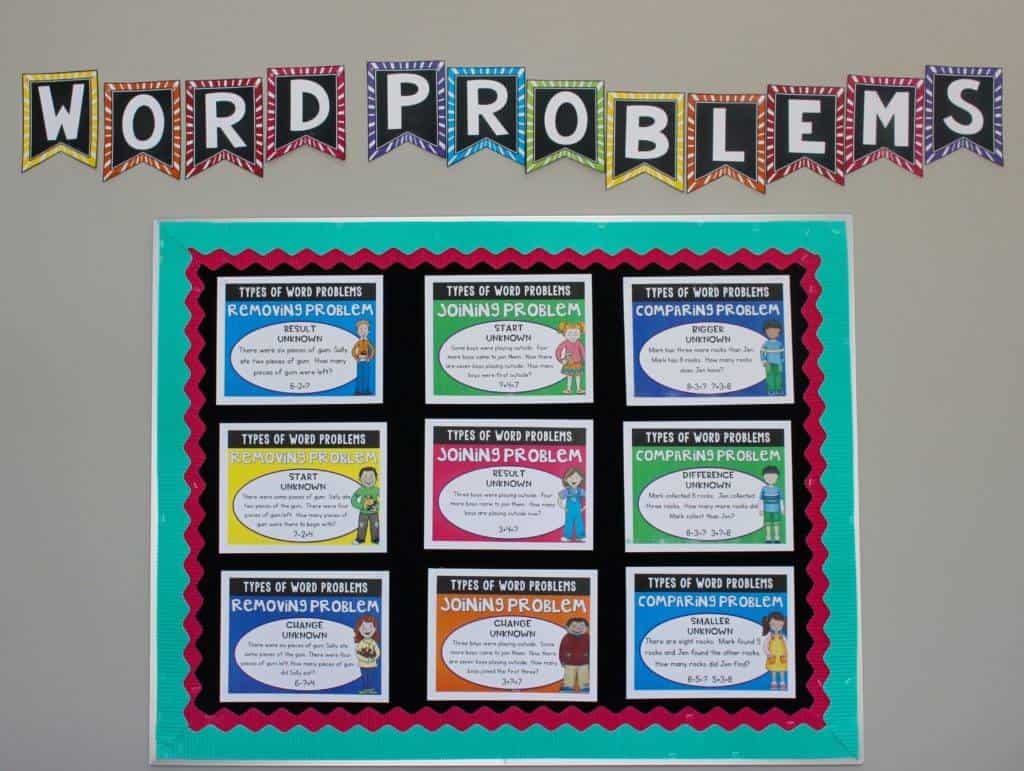
I know simply introducing this to students isn’t enough. For long-term retention, students need to consistently review these types of word problems, so I’ve made a few additional practice activities to go along with the numberless word problems. I made a Types of Word Problems Booklet, where students solve AND write different types of word problems. The booklet also includes 21 pages of independent practice for solving each type of word problem.
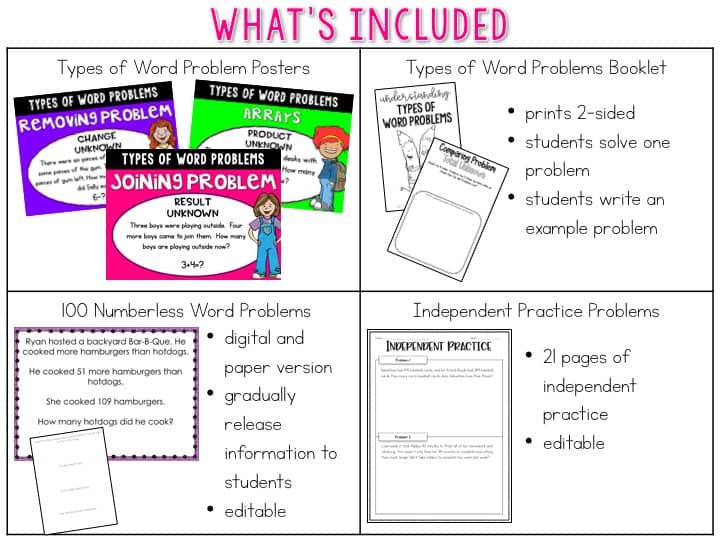
I didn’t add a lot of clipart and frills to this unit, because I wanted to be able to share with you a completely editable version, so you can adjust it to your students and their needs.
When first implementing this strategy, one of my greatest concerns was how I would implement this AND number talks. After considerable planning, I decided that I would incorporate these numberless word problems and number talks into one lesson. Hopefully, this planning will save you HOURS of time! If you don’t utilize number talks, don’t worry! You can simply omit that portion of the lesson.
Each week, students focus on one type of word problem AND one number talk strategy. You can see the table on the following page for the general plan. The numbers I have selected for the word problem will lend themselves to a number talk using that particular strategy. I have also included additional numbers for extended computation practice. I like to have students solve the problem with the algorithm and their number talk strategy, so they can see how the two relate to each other. The number talk portion is completely optional. I just love combining things when I can.
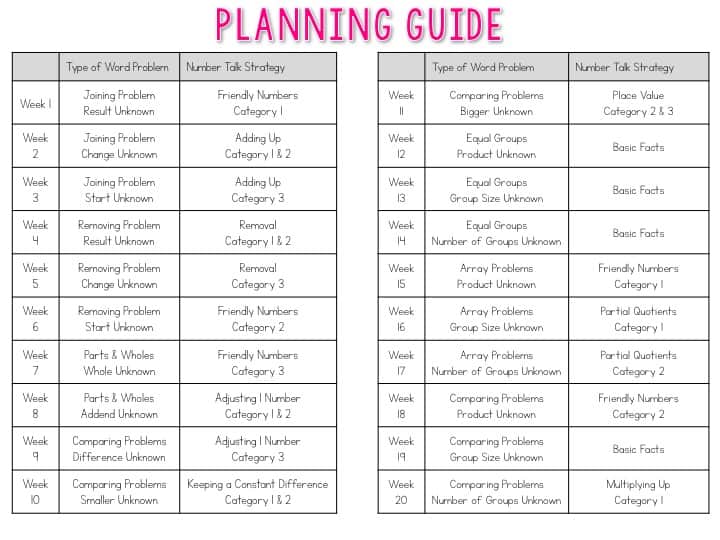
You can view this resource here, and I’m happy to answer any questions you may have. I also hope to share some informational videos with you soon! You can learn more about teaching upper elementary math in this mega post.



The link for the paper version doesn’t work?
All of the links should take you to the same place. I’ve grouped everything together.
The link doesn’t work. 🙁
Which link are you using?
Good Morning,
I love this! I am a math teacher but I am also a mother of an 8 year old girl who is struggling with Math (especially the multi step word problem that Pearson’s Envision bombards them with). I tried clicking on your link but it is not connecting. Any suggestions? Thank you and thank you for sharing!
Is this what you’re looking for? https://www.teacherspayteachers.com/Product/Numberless-Word-Problems-4324223